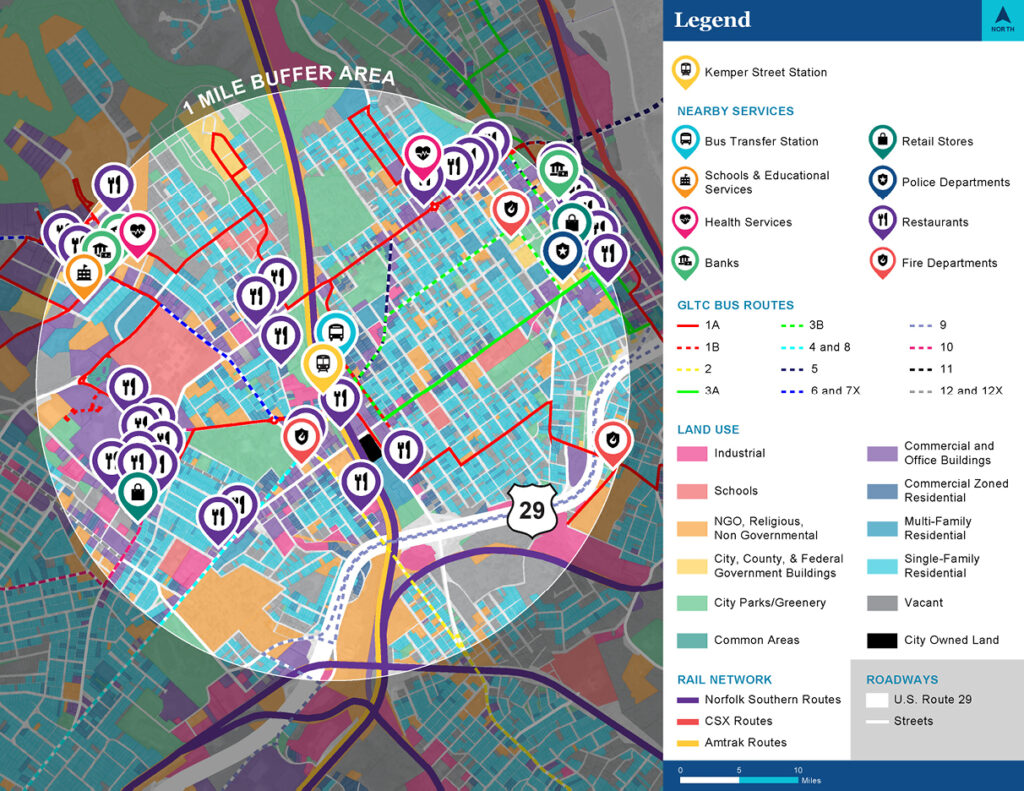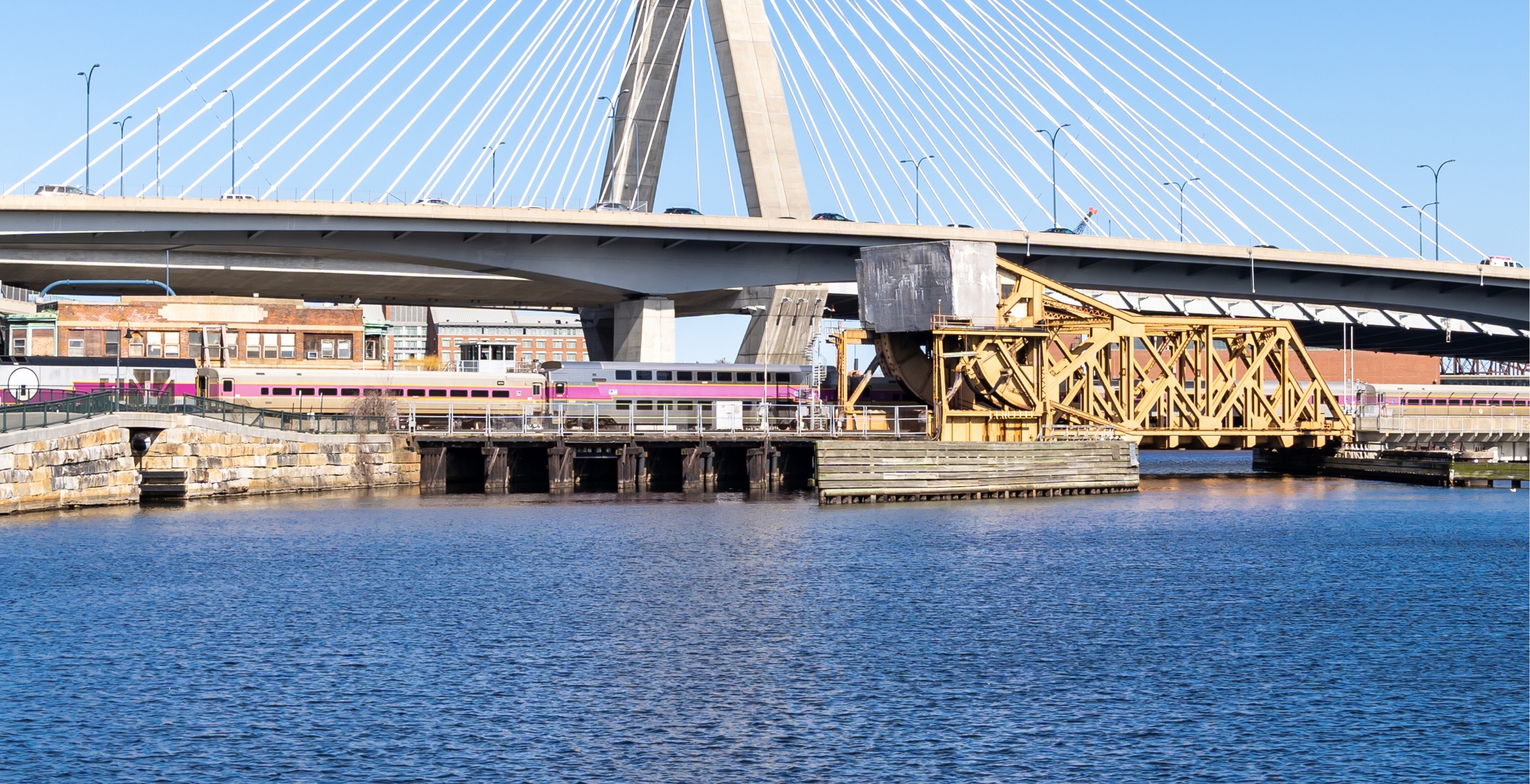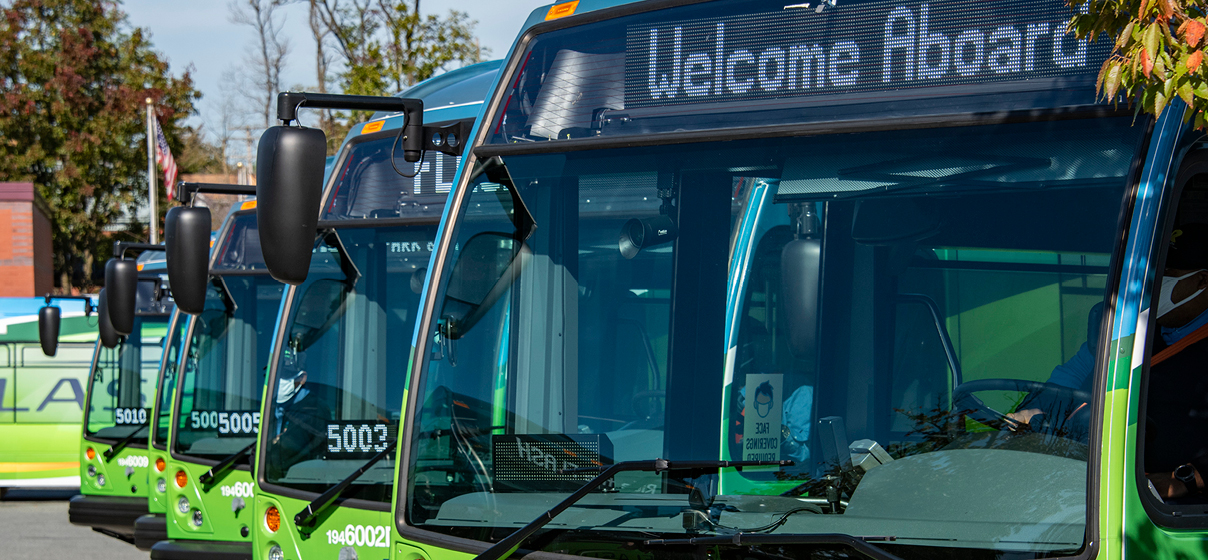Virginia’s General Assembly recently initiated a new economic analysis that looked at passenger and freight rail enhancements in Central Virginia – which encompasses the City of Lynchburg and Bedford, Campbell, Amherst and Appomattox Counties. The goal of the analysis was to encourage economic development and yield long-term success and growth in the region.
The effort was led by the Virginia Department of Rail and Public Transportation (DRPT), working in collaboration with the Virginia Economic Development Partnership (VEDP). From this partnership, STV was selected to prepare the Central Virginia Rail Economic Development Study. This study– which was submitted to the General Assembly last fall – looks at different freight and passenger rail enhancements, referenced as opportunity concepts, and leverages quantitative data to assess the economic benefits each could potentially bring to the region.
“The initiative was an opportunity for the entire region to come together and talk about what’s next for Central Virginia,” said Patricia Macchi, vice president and national director of infrastructure economics and grants advisory at STV. “Together, we created a study that serves as a framework for DRPT to look at similar concepts in other parts of the Commonwealth in the future.”

The study applied a multicriteria analysis, which encompasses a decision-making technique used to evaluate and compare multiple opportunity concepts or options based on many criteria. In this instance, STV’s team developed a methodology to evaluate three freight and two passenger rail opportunity concepts within the study area:
- Identification of Criteria such as cost, feasibility, environmental impact, social implications and technical requirements, among others.
- Criteria Weighting to reflect the significance of each criterion in the decision-making process, which can be determined through various methods including judgement, stakeholder consultation, or quantitative analysis.
- Alternative Evaluation that compares each criterion for all concepts and scores or rates them accordingly. The evaluation can be qualitative, quantitative or a combination of both.
- Aggregation of Scores to determine an overall score or ranking for each concept.
Crucial to the process was the amount of data STV’s team distilled for the study. STV built its analysis around several elements including employment and population growth, land use characteristics and freight and passenger rail operations.
The team then worked with DRPT to perform targeted outreach to government and industry representatives inside and outside the region to understand the transportation landscape better, identify unique needs and emerging trends, and uncover opportunities for rail as a transportation solution. Through this outreach, data was collected about the types of freight and volumes moved, key routes, origins, destinations and potential site locations for recommended opportunity concepts.
“We had some great conversations with several local and regional stakeholders,” said Thomas Redstone, AICP, senior economist. “That outreach became the backbone of our analysis. It’s how we evaluated the different opportunity concepts and then refined our rating criteria to determine what may have the best short- and long-term impact for the region.”
In determining a score for each concept, STV’s analysis ranked each option on several factors. For passenger rail, that included market growth (population and employment), implementation timeline, streetscape accessibility, current ridership, stakeholder interests and scale of investment. For the freight options, the criteria included market growth (population and employment), implementation timeline, industry support, economic viability, stakeholder interests and scale of investment.
“Our ranking criteria allowed us to identify three of the five opportunity concepts to be prioritized for further analysis,” said Hana Shuck, infrastructure economist. “With these opportunities narrowed down, we could then conduct a thorough economic analysis to determine the potential economic impacts and asses the overall return on investment.”

For example, in analyzing the economic impacts of a new passenger rail station in Bedford, VA, the team looked at such factors as:
- Direct and total short-term economic impacts from capital expenditures to build the passenger rail stop during the 2026-2029 implementation period.
- Direct and total long-term economic impacts from ongoing operations and maintenance expenditures for the stop during the 2030-2049 operating period.
- Direct and total long-term economic impacts from tourist spending in the region from passengers making leisure trips to the area during the 2030-2049 operating period.
- Direct and total long-term economic impacts from improved business productivity and additional disposable income initiated by the rail stop during the 2030-2049 operating period.
- Direct impacts from reduced carbon and non-carbon emissions in the region and new station amenities due to the operation of the passenger rail stop during the 2030-2049 operating period.
Once the options were analyzed and prioritized, STV’s team future funding opportunities. That includes funding streams like DRPT’s FREIGHT Program, which is designed to support rail infrastructure investments to expand Virginia’s freight network, and the Rail Preservation Fund, which benefits shortline railroads operating in the Commonwealth.
“This economic analysis applies a data-driven, transparent process to demonstrate the direct and total economic impacts of investing in the most viable opportunity concepts,” Macchi said. “It provides compelling and defensible measures to communicate the multiple ways these investments can generate economic value to the region and the Commonwealth as a whole.”







